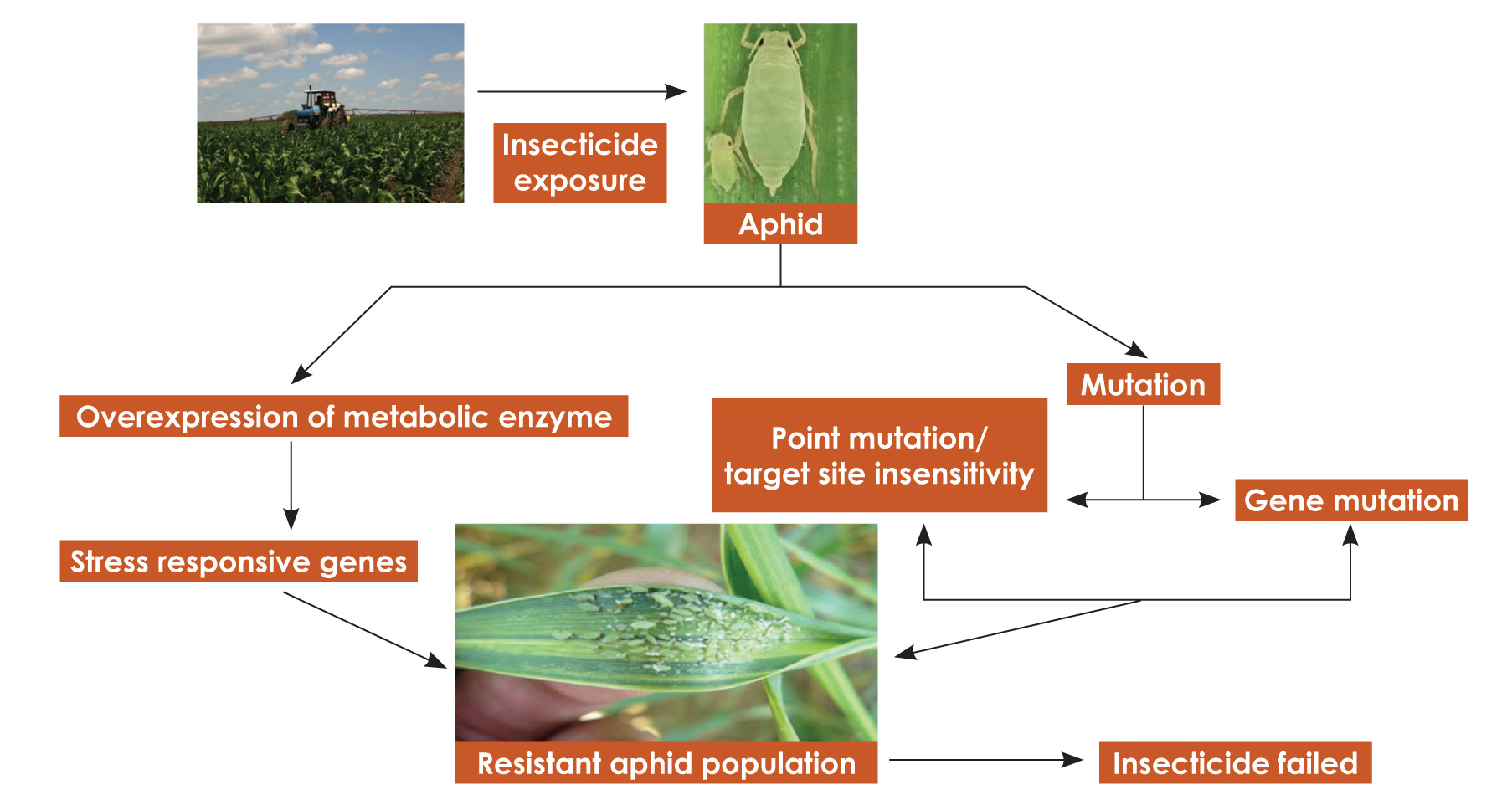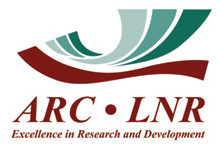
Aphids are globally significant economic pests that can lead to substantial economic losses. Management of aphids is challenging because of their extremely high mobility and the fact that they can rapidly reproduce, resulting in high population pressures causing economic damage to cultivated crops.
The aim of chemical control is to keep pest numbers below damaging levels. Because all aphid species can be controlled with chemical insecticides, it is one of the most prevalent management strategies used so far. The most used insecticides are organophosphates and neonicotinoids. Continued and widespread use of these insecticides will, however, eventually result in insecticide resistance in aphid species. Multiple treatments and increased doses of insecticide have previously resulted in resistance to several insecticides in aphid species. Two species of wheat aphid have developed different degrees of resistance to pesticides with various mechanisms of action. Insecticide resistance is a major cause of failure to control aphids on wheat.
Several mechanisms that render individuals resilient to chemical insecticides, such as reduced cuticular penetration, mutations of targeted receptor sites, and increased levels of detoxification enzymes, are found in aphids. The activation of genes is believed to be the main mechanism conducting xenobiotic detoxification through which aphids counteract exposure to several insecticidal compounds. Under the selection pressure of insecticide toxicity, a major percentage of the aphid transcriptome is changed, and several hundreds of genes involved in a wide range of pathways are expressed differentially in multiple resistant genotypes (Figure 1).

Developing an appropriate pest control strategy
To maintain the ability to produce wheat efficiently, producers must have continued access to effective insecticides. The development of insecticide resistance is a major limiting factor to access to effective insecticides. Developing an appropriate pest control strategy should ideally consider the insecticide tolerance difference among different aphid populations. Resistance monitoring is an effective component of a resistance management approach since it provides useful information on the resistance of aphid populations to insecticides with different modes of action. Implementation of resistance-delaying tactics should also be considered. The most important of these tactics are minimising insecticide use, applying insecticides only when needed, and rotation of insecticide classes.
 A consequence of the high fitness cost of maintaining resistance, and rapid reproduction of aphids, the resistance levels to insecticides may decline after a few generations in the absence of exposure to the insecticide. Organophosphates and neonicotinoids have been applied widely to manage wheat aphids in recent years and aphids seem to be developing resistance to these insecticides. Relying on insecticides in different classes for a few generations and limiting insecticide use to certain areas where and when it is absolutely necessary to protect yield, will facilitate insecticide resistance management and provide continued access to effective insecticides.
A consequence of the high fitness cost of maintaining resistance, and rapid reproduction of aphids, the resistance levels to insecticides may decline after a few generations in the absence of exposure to the insecticide. Organophosphates and neonicotinoids have been applied widely to manage wheat aphids in recent years and aphids seem to be developing resistance to these insecticides. Relying on insecticides in different classes for a few generations and limiting insecticide use to certain areas where and when it is absolutely necessary to protect yield, will facilitate insecticide resistance management and provide continued access to effective insecticides.



























